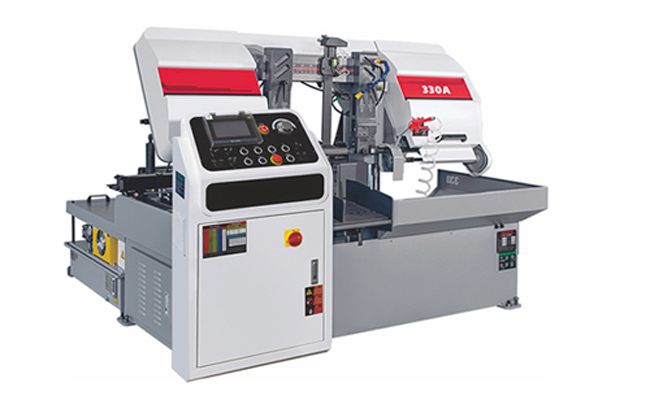BS-85 Portable Bandsaw
Cutting Capacity :
Below is the translation of the provided content into English:

| Problem | Possible Causes | Solutions |
|---|---|---|
| Cutting Not Straight | 1. Insufficient blade tension 2. Blade wear or damage 3. Guide blocks not adjusted properly 4. Bandsaw not leveled |
1. Adjust blade tension to the appropriate range 2. Replace the blade 3. Re-adjust the guide blocks 4. Check and level the bandsaw |
| Slow Cutting Speed | 1. Incorrect tooth pitch selection 2. Blade wear 3. Feed speed too fast or slow 4. Insufficient blade tension |
1. Select the appropriate tooth pitch based on material thickness 2. Replace the blade 3. Adjust the feed speed 4. Adjust blade tension |
| Blade Breakage | 1. Excessive blade tension 2. Blade wear or damage 3. Material not clamped securely 4. Worn guide blocks |
1. Adjust blade tension 2. Replace the blade 3. Ensure the material is clamped securely 4. Replace or repair guide blocks |
| Rough Cutting Surface | 1. Tooth pitch too large 2. Blade wear 3. Feed speed too fast 4. Insufficient blade tension |
1. Choose a blade with a finer tooth pitch 2. Replace the blade 3. Reduce feed speed 4. Adjust blade tension |
| Premature Blade Wear | 1. Blade speed too fast or slow 2. Incorrect tooth pitch selection 3. Insufficient or ineffective coolant |
1. Adjust blade speed 2. Select the appropriate tooth pitch based on material 3. Check the coolant system and replenish or replace coolant |
| Excessive Vibration | 1. Bandsaw not securely fixed 2. Insufficient blade tension 3. Blade wear or damage 4. Material not clamped securely |
1. Secure the bandsaw 2. Adjust blade tension 3. Replace the blade 4. Ensure the material is clamped securely |
| Poor Coolant Performance | 1. Insufficient coolant 2. Clogged coolant nozzles 3. Incorrect coolant concentration |
1. Replenish coolant 2. Clean the nozzles 3. Adjust coolant concentration |
| Bandsaw Fails to Start | 1. Power supply issue 2. Motor damage 3. Control circuit failure |
1. Check power connections 2. Inspect or replace the motor 3. Check and repair the control circuit |
By following these methods, common problems with bandsaws can be effectively resolved, ensuring efficient operation and long-term use. If issues cannot be resolved independently, it is recommended to contact a professional technician for inspection and repair.
Cutting Capacity :
Cutting Capacity :